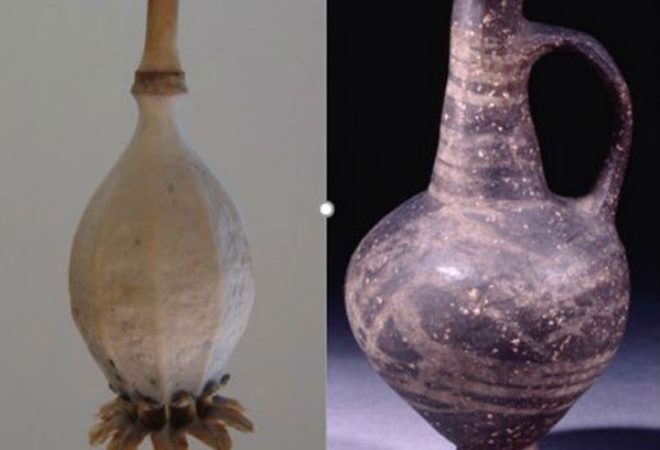Traces of opiates preserved inside a 3,500-year-old jug have been found by scientists.
The late Bronze Age base-ring juglet and its contents are intact and is held in the British Museum collection.
There had been a “long-standing” theory the jugs had been containers for opium and a new technique was used detect a plant compound related to it.
It is the first chemical evidence of the opium poppy within such a jug, University of York scientist said.
Dr Rachel Smith, from the university, said: “It’s not opium itself we’ve found, the jug is 3,500 years old so whatever was in there is degraded.
“We’ve certainly got a link to poppies through the alkaloid I found.”
Dr Smith said there had been a “long-standing theory” the jugs had been containers for opium because their shape resembled a seed head of the opium poppy.
She said: “I was able to find traces of an opium alkaloid called papaverine.”
Alkaloids are a broad range of chemical compounds produced by plants, opium has particular ones that you can use to mark its presence, said Dr Smith.
They are known to have significant psychological effects on the human body, the university said.
She said the opiate alkaloids detected by her were the most resistant to degradation. That had made them easier to find in ancient residues than other well-known opiates such as morphine and codeine, she added.
The rest of the jug’s residue was mostly composed of a plant oil.
A new analytical method was developed by Dr Smith as part of her PhD at the university’s Department of Chemistry.
Source: BBC

































Leave a Comment
You must be logged in to post a comment.